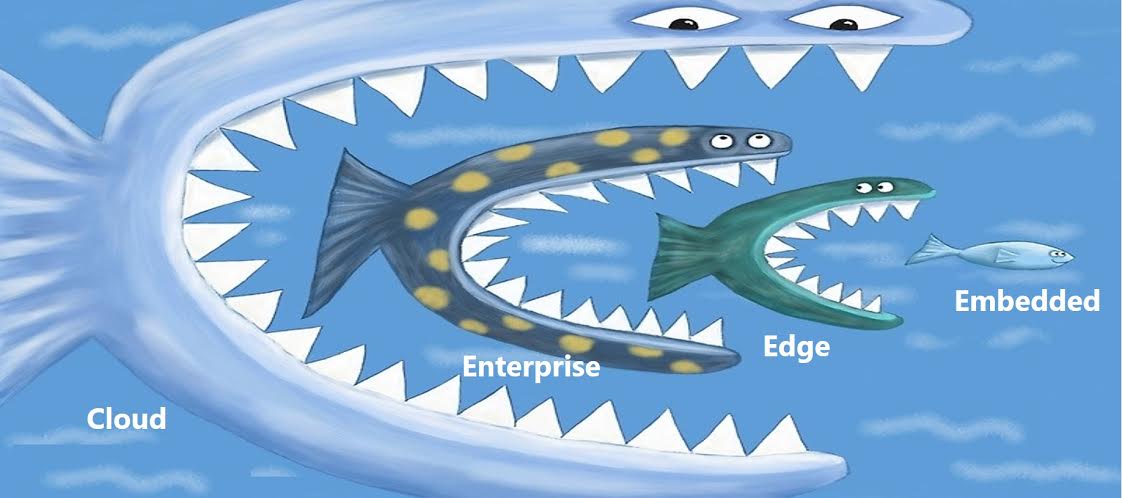

Last week ARC published a report I wrote about standard software runtime environments in industrial automation. Since the 1990s many higher-level industrial applications jumped onto Windows software platforms, and this level of standardization enabled a great deal of innovation in the industrial software space. But Windows operating systems were never able to penetrate to the lower levels of automation where process control or machine control takes place. Windows was not designed to do this.
But in today's IT world, vast amounts of computational resources can be applied to all kinds of applications with little difficulty. When you get to the factory floor, however, when you get to the devices that are actually controlling production process, that resource abundance is no longer found. Why can't we apply the technology that's exploding in the IT world to the controllers that really manage our production processes at the lowest level?
The fundamental reason we can't do this is because each type of controller carries with it its own proprietary software runtime environment as well as a complete vendor-supplied set of software tools that are used to configure, manage, and monitor the controller. Decades ago this type of structure was absolutely necessary. But is it still necessary today? Many people in the process automation industry seriously doubt this, including me.
At last month's Hannover Messe, Intel and Wind River hosted a demonstration of a process control system that worked entirely differently from a software standpoint. Instead of dedicated controllers performing specific operations, the process control task was split among a cluster of processors, and if one of these failed, then the impacted control computations were swapped to another compute resource within the cluster, all managed by a local on-premise server.
This configuration had been developed as part of a proof-of-concept automation system requested by ExxonMobil in what has become the Open Process Automation Forum. In order to move from present systems to such a futuristic process automation system, applications would have to move from the proprietary software runtime environments of today’s controllers to a more standardized software runtime environment that would support shared computational resources as well as multiple vendors providing these resources.

The Open Process Automation Forum is working now to specify exactly this type of process automation system.The fact that Intel could demonstrate swapping of the process control computational load from one processor to another is important, but in a way the most important fact of this demonstration is hidden. That is that all the processors involved shared a common software runtime environment that enabled an application to move quickly and easily from one processor to another. Operating a continuous manufacturing plant with such standard software runtime environments is something of a Holy Grail in the process automation world.
If future process controllers operate with a standardized software runtime environment, that will have a massive impact on both the technology used for process automation and on the industry itself. How does this tie in with the industrial IOT? Certainly one of the barriers to wide deployment of IOT solutions is the heterogeneity represented by the devices that do the actual control of manufacturing processes.
Should these devices begin to adopt a standardized software environment, that would open the door to any number of additional applications and suppliers who could provide new and valuable contributions in place of what is today an environment essentially captured by one single vendor. The common software environments that we see in cloud and in enterprise computing are penetrating “down” the so-called automation pyramid towards the devices that really control the manufacturing process. As they reach these controllers we will see a major transformation of both technology and industry. I believe this is likely to occur, and in this week’s report I outlined some of the reasons and some of the likely candidates to replace today's proprietary software runtime environments.
If you'd like a copy of this report please email me your full contact information and I'd be happy to share it with you. I'm very much looking to open a dialogue with people on this topic. It seems to me that we are nearing an inflection point in manufacturing automation, so I'm interested in hearing a wide variety of opinions. Please let me know what you think.

